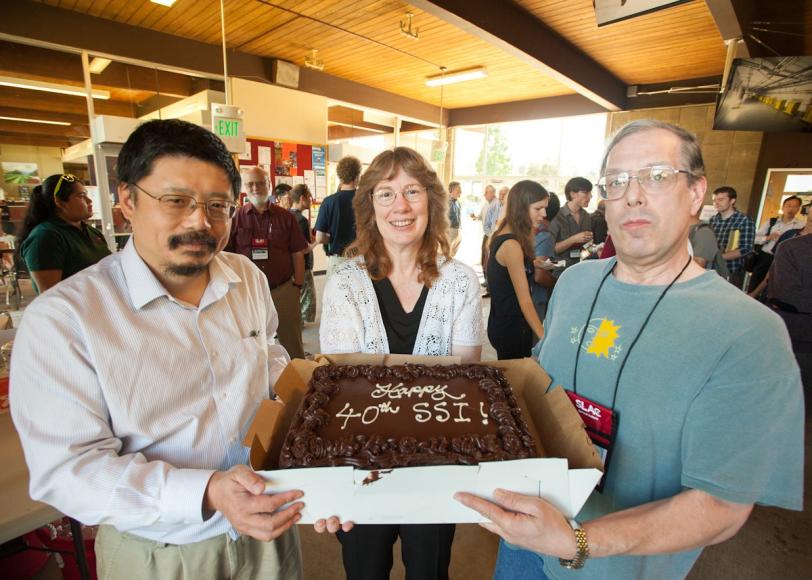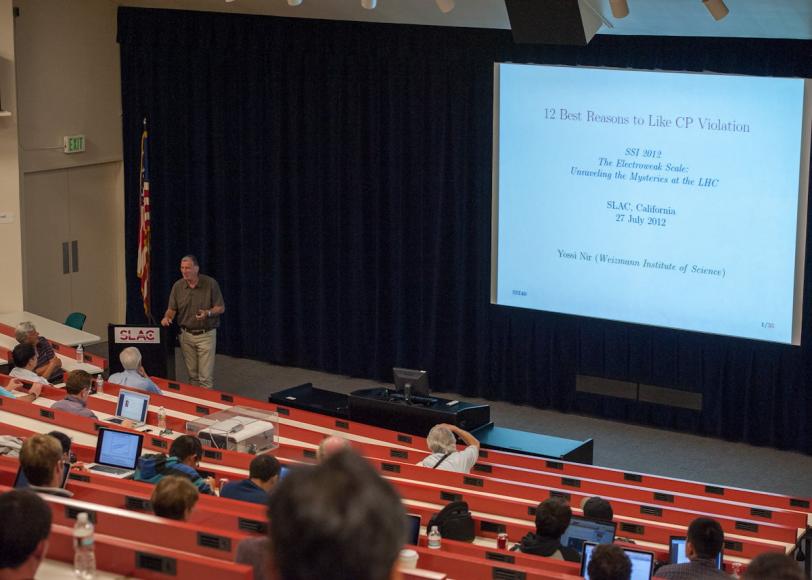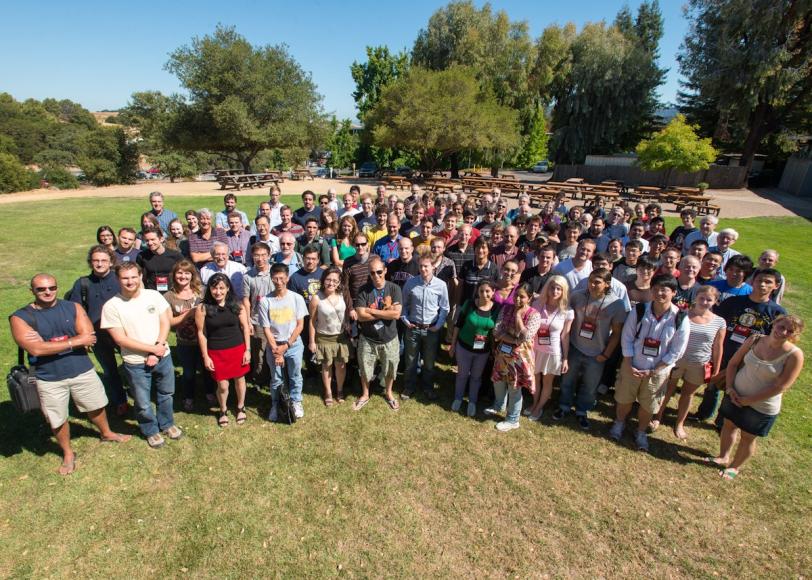SSI Celebrates 40 Years of Science, Learning and Friendship
Along with lectures, poster sessions, discussions, and the traditional SLAC vs. SSI soccer game, the 160 attendees from five continents who converged on SLAC for this year's SLAC Summer Institute have been treated to something that happens only once every 40 years.
By Lori Ann White
Along with lectures, poster sessions, discussions, and the traditional SLAC vs. SSI soccer game, the 160 attendees from five continents who converged on SLAC for this year's SLAC Summer Institute have been treated to something that happens only once every 40 years. David Leith, SSI co-founder and long-time organizer, led them on a trip down Memory Lane during a special session last week.
According to Leith, the institute was born in the early 1970s of a desire among the SLAC faculty – at that time 14 members strong – to create a stronger academic climate. "Eventually the discussion got around to looking at the great successes of theory summer schools in Europe and on the U.S. East Coast," Leith said, "and how to do something that would be a good fit with SLAC as well as fill a need for the high-energy physics field in providing continuing post-Ph.D. education for those involved in particle physics."
Early discussions settled on a format that SSI continues to follow, with little change, 40 years later: a focus on one hot topic each year, with invitations going out to theoretical and experimental physicists. This year's program, "The Electroweak Scale: Unraveling the Mysteries at the LHC," began July 23 and runs till Friday.
Forty years of hot topics have added up to considerable advances in high-energy physics, and Leith's talk on July 27 was followed by reviews of the science covered at SSI during those four decades. SLAC physicists Lance Dixon and Michael Peskin, Morris Swartz of Johns Hopkins and Yossi Nir of the Weitzmann Institute were each quick to point out SLAC's involvement in such accomplishments as proving that quarks actually exist and confirming theories regarding why there's more matter than antimatter in the universe.
On a less formal note, Swartz and Nir reminisced about their days at SLAC, their "home away from home," both as SSI students and lecturers. SSI has always had a strong social agenda, with dinners for students and faculty, much informal discussion and a legendary soccer challenge between SLAC players and SSI students.
Where friendships form, collaborations can't be far behind.
"It was a great afternoon spent celebrating 40 years of the SLAC Summer Institute," said JoAnne Hewett, head of SLAC's Theory Group and SSI organizer. "SSI has become an integral part of our field. Everyone who’s anyone participated in a SSI early on in their career."

(Photo by Matt Beardsley)

(Photo by Matt Beardsley)

(Photo by Matt Beardsley)